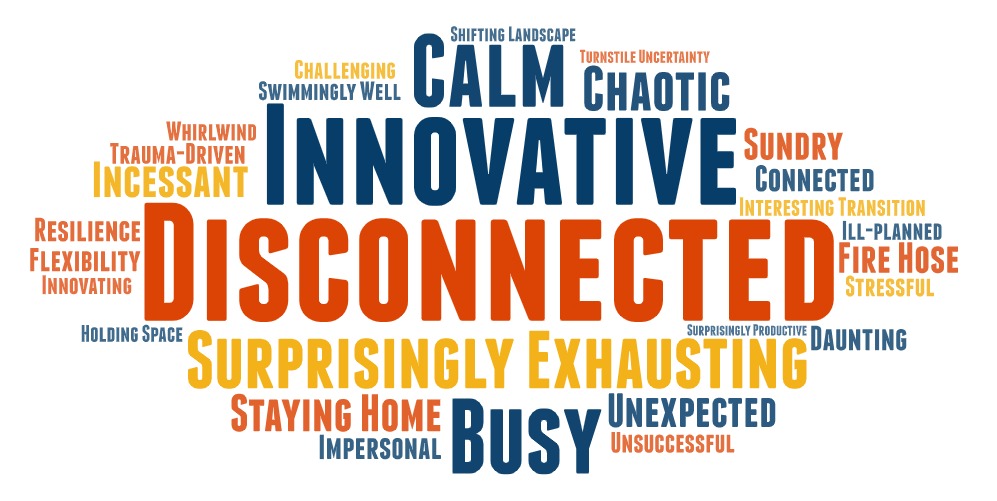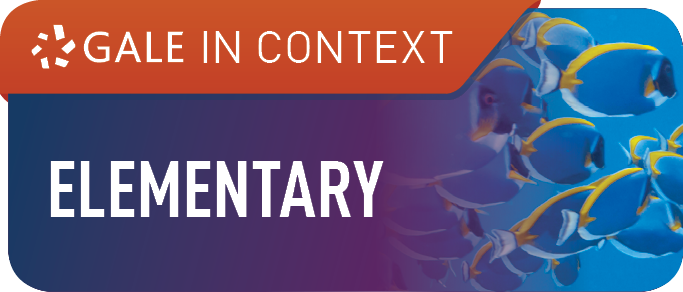| By Gale Staff |
A few months ago, educators shared their top concerns about returning to school amid the ongoing pandemic. With the fall semester almost concluded, we reached out once more to gain an understanding of how the 2020–21 school year is going, where teachers are seeing gaps, and how they’re addressing them.
Here’s what they had to say.
Educators Share What They’re Experiencing This School Year
Teachers had less to say about tools and logistics for remote and hybrid learning and more to say about the quality of education and maintaining communication with students and families.
Some of the most common words educators used to describe the current school year are innovative, disconnected, busy, calm, and chaotic. It’s clear that while the pandemic is still presenting challenges, teachers are remaining resilient and creative.

Where Are Educators Seeing the Biggest Gaps?
While COVID-19 is impacting all of us in different ways, there are some common gaps that teachers are seeing this school year. Keeping students engaged, maintaining communication with families, having enough staff to teach, and adapting curriculum are just some of the challenges educators are experiencing this year.
“Right now, we’re seeing the biggest gaps in classroom behavior. Since many of our students haven’t been in the classroom since March, the transition has been difficult for some. We are reteaching a lot of what was ‘missed’ or taught virtually during the last school year before moving forward. But overall, our children and families are resilient. Our schools and teachers are resilient.”
– Dr. Justine Green, Principal of Tamim Academy, Florida
“For me, the biggest gap is in the actual learning and engaging students. Checking for understanding at critical moments is hard in a cyber world, and students often get ‘lost’ when it’s time to do asynchronous learning.”
– Ashley Cobb, Eighth Grade Math Teacher, Washington, D.C.
“The biggest gaps that I’ve encountered have been from students who were already struggling with focus and attention while being in class—mostly curriculum related. There are a number of students who really seem to be excelling with Zoom classes, which has surprised me, however, many of these students operate well with self-paced tasks anyway.”
– Brad Evans, Secondary School Teacher, Australia
“I feel connected to students and am grateful that I can support their social-emotional needs in addition to learning. On the other hand, I feel disconnected from parents. As a parent, I know that many of us are still figuring out how to best support our children in a time of uncertainty. That uncertainty makes it hard to know where my knowledge and skills connect with parents’ needs and wants for their children.”
– Tiffany Arenas, Teacher, Arizona
“Being able to accurately monitor student comprehension has been an enormous gap. Online assessments and assignment submission via Seesaw or Google Classroom can give a glimpse into how lessons are resonating, but beyond that, teachers are far more reliant on the observations and insight of their students’ parents in order to fully understand where students are in their understanding.”
– Meredith Essalat, K-8 School Principal and Author of The Overly Honest Teacher, California
How Educators Are Overcoming Gaps and Supporting Students
Despite the gaps they’re seeing, educators are making use of their knowledge, experience, and educational resources to adapt instruction and support students.
“We’re taking it slowly and making sure we reteach all classroom expectations and model the correct behavior. We are also aware that students have gone through a traumatic socialization experience during COVID-19, and this year continues to be full of surprises. We have to adapt to each new situation, and just provide the best learning experience for our children. If they are learning, growing, and having fun, the rest will fall into place.”
– Dr. Justine Green, Principal of Tamim Academy, Florida
It’s no surprise that schools are placing an even larger emphasis on social and emotional learning (SEL) this school year. That’s why Gale continues to partner with the Cameron K. Gallagher Foundation. Together, we provide students with trusted mental health and wellness resources on a powerful digital platform that can be accessed anywhere, anytime. Cameron’s Collection offers teens a safe, confidential place to turn when they are struggling.
“In an online environment, classroom discussions aren’t as natural and free-flowing. Rather than leading my class with impromptu classroom discussions into the depths of certain subjects, I rely on the more practical workbook sheets to guide us into the subject matter. I’ve found that relying on more organized material to keep the entire class in the same place at the same time provides a stress-free way to get conversations going and provides an established system for grading finished work.”
– Wanda Kay Knight, Teacher and Author, Pacific Northwest
Adapting curriculum became necessary for many teachers this school year and having access to actionable strategies and intuitive tools to support remote and hybrid instruction has become increasingly important. Gale’s Tools to Support Virtual Learning page provides quick tips for remote learning, including how to prioritize communication with students.
“I always strive to give my students individual attention, but when you’re outnumbered 35 to 1 it’s difficult. I’ve had to adapt my warm-ups and homework to be more interactive and I’m always looking to integrate more interactive technology into my classrooms. My students are clearly ready for it.”
– Bryan Truong, Public School Teacher and Founder of Game Cows
For young learners to effectively use technology—especially in a distance learning environment—they need intuitive tools designed just for them. Gale In Context: Elementary is a cross-curricular database that gives children a safe place to find answers to their questions, practice research skills, and explore interests inside and outside the classroom. It also gives teachers access to digital resources that can enhance instruction and increase engagement. With features like daily “I wonder . . .” questions, teachers can incorporate age-appropriate, interactive content with an inquiry-based learning approach.
“To engage students, I include closing asynchronous games that they find exciting, and take attendance at a random moment in the last twenty minutes of our 80-minute class.”
– Ashley Cobb, Eighth Grade Math Teacher, Washington, D.C.
Educators made the importance of ensuring quality of education clear. Turn Access into Action at Your School outlines 10 best practices to effectively use educational databases to promote equity and continuity for students—whether they’re learning at home, in school, or both.
Gale Connects Educators and Students with the Resources They Need
As the education landscape continues to change, we’re continuing our mission of connecting educators, students, and families with the resources they need to be successful both personally and professionally.
And remember, we’re here. Visit the Gale eLearning page to learn how we’re supporting educators and today’s digital learners.
FW0663 – adidas samba ireland live score last night – adidas Futurenatural Shoes Vivid Red Mens | IetpShops , New Balance 327 Moonbeam Leopard , men air max jordan 13 , 4011496719 , Where To Buy


